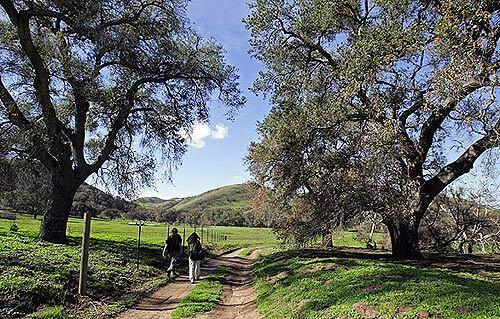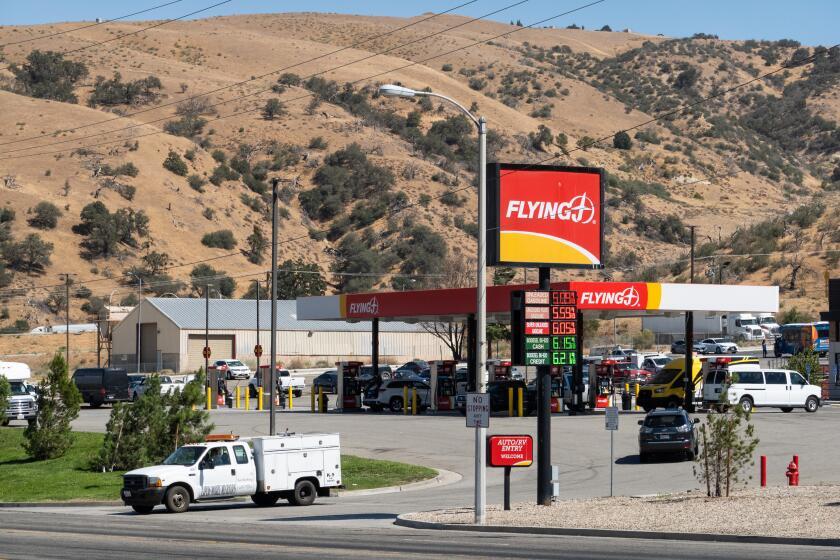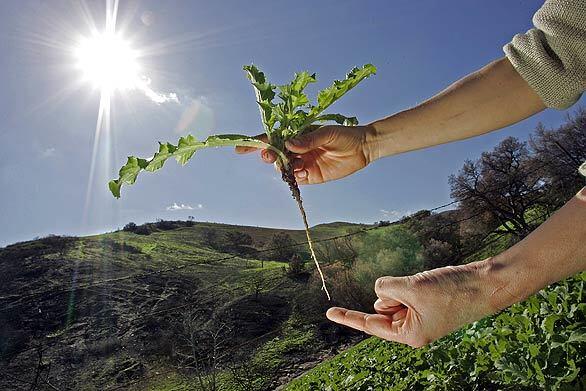
Jutta Burger, field ecologist with the Irvine Ranch Conservancy, displays a nearly foot-long root of a milk thistle. The weeds are in full bloom amid blackened brush and grass. The landscape change is known as “type conversion” and can have a profound effect on fire season. (Don Bartletti / Los Angeles Times)
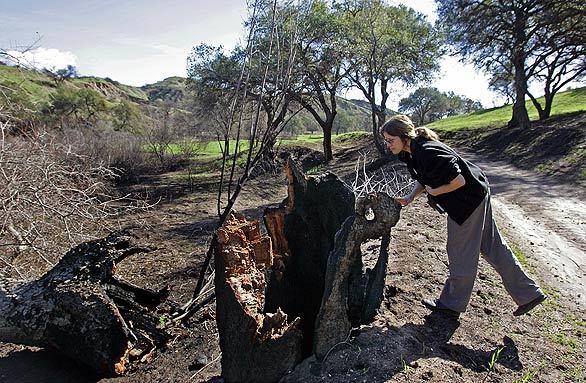
Jutta Burger peers into the burned-out trunk of a coast live oak. Ecologists are examining how the Irvine Ranch preserve will recover from the Santiago fire that roared through last October. (Don Bartletti / Los Angeles Times)
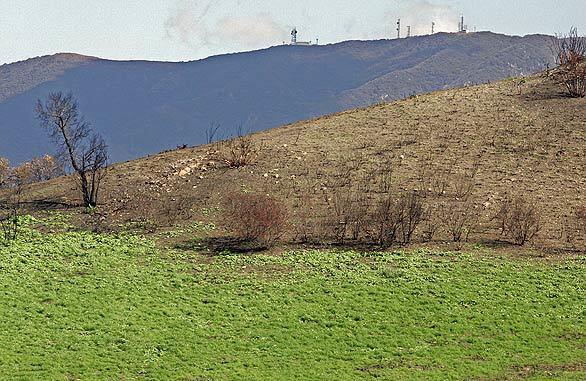
Nonnative weeds have been encroaching on Southern California wildlands for centuries and the frequency of wildfires has exacerbated the situation. (Don Bartletti / Los Angeles Times)
Advertisement
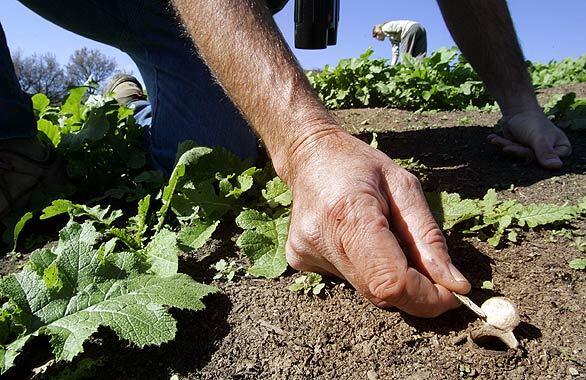
David Olson, director of science and stewardship for the Irvine Ranch Conservancy, gently lifts the “door” of a California trap door spider nest. Aside from the devastation of the native scrub, the Santiago fire almost wiped out the spider population and destroyed birds’ nests. (Don Bartletti / Los Angeles Times)
